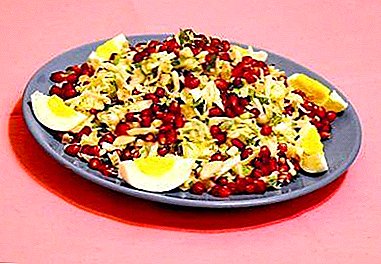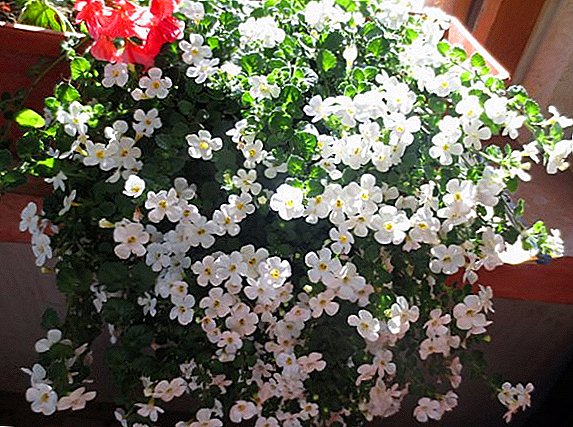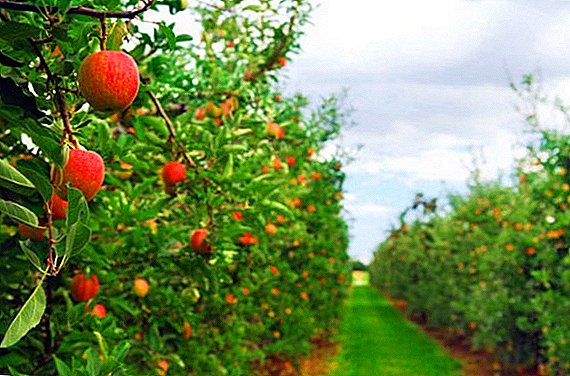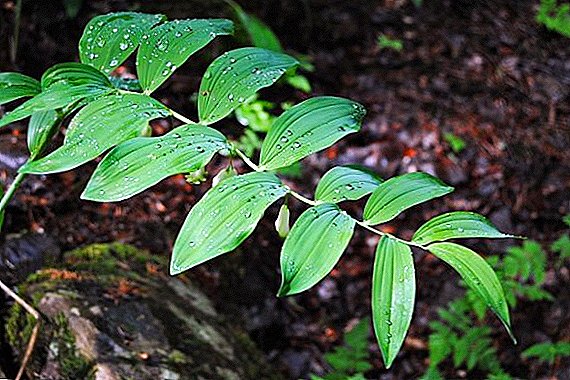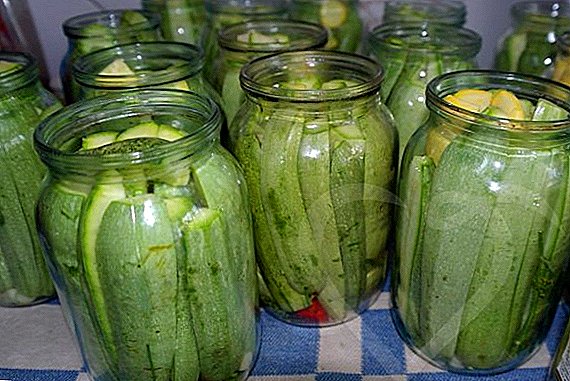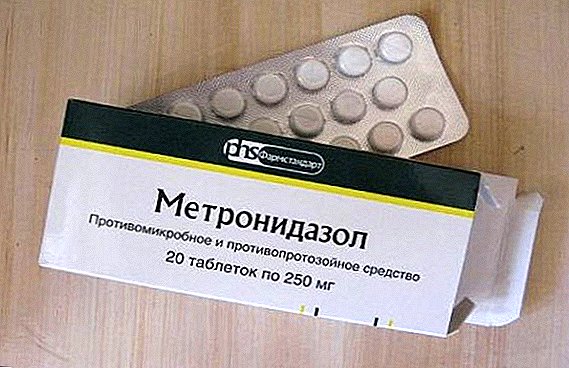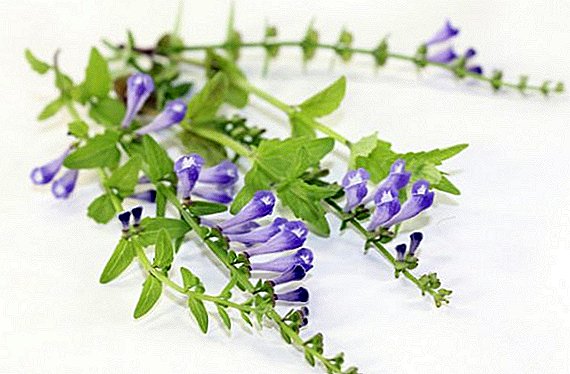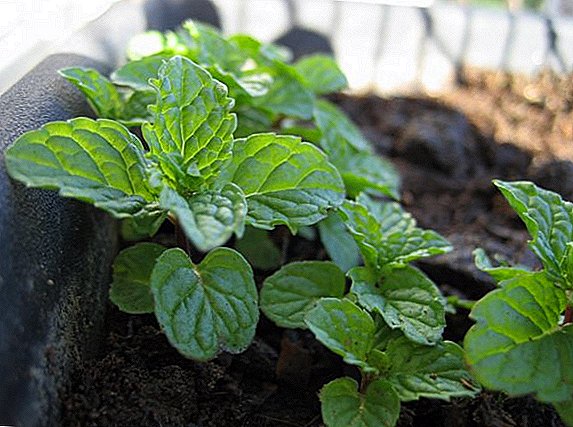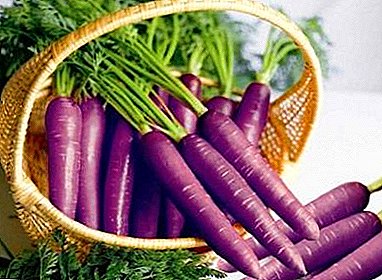
Carrots are one of the most popular vegetables on our tables. Most often, orange carrots are included in the daily ration, but in addition to this habitual variant, there are roots with purple color.
How does such a carrot differ from orange, and how to grow and use it, this article will help to understand.
We will also tell you how to care for such a root crop and what is its chemical composition. For clarity, the article will be given photos of purple carrots.
What it is?
Purple carrots - a representative of the umbrella family. Refers to the same subspecies as orange carrots - Daucus carota subsp. sativus Biennial herb with a well-developed root and characteristic for the species of pinnate leaves.
Brief history of selection
The usual orange carrot is the result of the work of breeders and was originally purple. The vegetable cultivated today was derived from wild varieties whose roots were purple in color. Wild purple carrots, most likely, used to be of interest to a person not as a root crop, but as a source of juicy greenery.
What does it look like?
Plant
Purple carrots have spreading tops with characteristic needle-carved leaves of a juicy green color. In appearance, the plant is no different from the classic orange carrot.
Roots
In length, the vegetable can reach 20-30 cm. Outside, the root crop is painted in a bright purple color, and inside it has an orange or yellow core. Also, the incision can also be painted in purple, but in a slightly different shade, like that of beets. There are varieties that can have several colors on the cut - yellow, orange and purple.
What is different from other species?
In addition to the external differences purple carrot has a different chemical composition. The concentration of nutrients in this root is several times higher, so it is more effective to use it for treatment than other types of carrots.
Where is growing?
Violet carrots in Russia can be grown everywhere, as well as orange. This root crop successfully transfers cold in an open ground, and after collecting differs in good fixity.
Sorta
Purple carrots do not have as many varieties as usual, but several varieties are widely available for purchase.
Dragon

Root crops have a rich purple color and a yellow core. The length reaches 25 cm, they are distinguished by a sweet taste and a high content of vitamin A. Seeds can be purchased in specialized stores. The price for a bag of seeds varies from 100-150 rubles.
Purple Elixir

Root crops are easily distinguished from other varieties by their purple-violet color. In the section, they are tricolor - an orange core, an intermediate yellow layer and a violet outer one. Planting stock is widely available for purchase at lawn and garden stores. The cost is 120-150 rubles per bag.
Purple haze

The fruits of this hybrid have a dark purple color outside and orange inside. The variety is early ripening and already 70 days after the emergence of shoots grows up to 30 cm in length. Resistant to diseases.
In the markets it is almost impossible to meet planting material of this class, but it can be easily purchased via the Internet or in specialized stores.
The cost of a bag of seeds is 130-160 rubles.
Cosmic purple

Early variety. Violet with a raspberry shade, the vegetable color is due to the thin, brightly colored skin. Inside this carrot is a classic orange color. Very juicy and crunchy fruit, 20 cm long. Planting material can be purchased at gardening stores online or offline. The price for a bag of seeds varies between 90-140 rubles.
The chemical composition of root vegetables
Minerals:
- calcium;
- magnesium;
- sodium;
- potassium;
- phosphorus;
- chlorine;
- sulfur;
- iron;
- zinc;
- iodine;
- copper;
- manganese;
- selenium;
- chromium;
- fluorine;
- molybdenum;
- boron;
- vanadium;
- cobalt;
- lithium;
- aluminum;
- nickel.
Benefit and harm

- Purple carrots are the richest source of vitamin A. Eating a root vegetable helps relieve fatigue, improves eyesight and eases the course of certain ophthalmologic diseases, such as cataracts.
- Also, the vegetable slows down the aging process in the body, strengthens the immune system and, in combination therapy, helps to heal from diseases of the heart and blood vessels.
- Anthocyanin contained in the composition is effective in preventing cancer.
Purple carrots can be harmful in case of individual intolerance or abuse.
It is recommended to limit the consumption of this vegetable to people suffering from a stomach ulcer or inflammation of the small intestine.
Step by step instructions: how to grow?
Purple carrots have a fairly simple agricultural techniques, and peculiarities of its care are similar to those used for orange carrots.
Preparing for landing
- Inventory. To organize the beds you will need a shovel and a rake. Grooves can be made with a special small flower shovel. You will also need a watering can with a nozzle with small holes.
- Soils. The best predecessors for carrots are potatoes, onions, cucumbers. The soil must be fertile and well fertilized.
- Seed. Before planting, seeds need to soak for a day - this will accelerate their germination and help identify unviable seed.
Landing process
- Landing dates. In the ground carrot seeds are sown in early spring. Purple varieties have good germination.
- Landing pattern. Seeds are distributed in rows in rows at intervals of 1-2 cm. 15-20 cm should be left between rows.
Care

- Suitable microclimate. Planting carrots feel good at a temperature of + 23 + 26 and quite unpretentious in matters of humidity. The main thing - to comply with the regime of watering. If the weather is hot, the tops of carrots can be sprayed.
- Watering. Watering planting carrots need warm distilled water in the evening. Moisture should be completely absorbed into the ground without puddles and stagnation.
- Top dressing. During the season, carrots are fed at least two times. The first dressing is carried out in the phase of 3-4 leaves of ammonium nitrate. The second - after the final thinning, using superphosphate fertilizers.
- Loosening. After the shoots of carrots become stronger, it is necessary to regularly loosen the soil. This will help avoid crust formation on the ground.
- Weeding. The first thinning is carried out after the appearance of 1-2 true leaves. Large seedlings should be left at least 2 cm apart.
- Mulching. Mulch violet carrots can be chopped straw, it will perfectly retain moisture and eliminate the need to loosen the soil.
Harvesting and storage of the crop
Purple carrots have lower yields compared to orange varieties.
- If a variety of early ripening has been planted, the crop can be harvested in the middle of summer.
- Varieties of average ripening period are removed after 80-110 days from the moment of emergence.
- Purple carrots of late maturity are harvested in the fall, in the first two weeks of September, in dry weather.
Crop should be kept in a cool, well-ventilated, dry room, in which there is no access to rodents and harmful insects.
List of errors and how to avoid them
- Thickening landings. Purple carrots are characterized by good germination, so it is not necessary to sow the seed bed thickly. Emerged shoots need to be thinned in a timely manner.
- Irregular irrigation. Failure of the irrigation regime leads to deformation and cracking of the fruit, so you should strictly adhere to the recommended scheme.
- The introduction of fresh organic. Do not fertilize carrots with fresh manure. Excess nitrogen damages the plant.
- Planting seeds in heavy soil with high acidity. Soil for planting carrots must be carefully prepared, balancing all the indicators.
Diseases and pests and their prevention
Purple carrot has high resistance to diseases and pest attacks.therefore, when growing any of its varieties, prevention is quite effective.

- Fomoz. The disease affects the roots, they are covered with black-brown spots with white bloom. Nitrogen supplements help prevent the disease.
- White rot. Struck with this disease, the fruits become soft and covered with white bloom. The disease is treated by making potassium supplements.
- Carrot fly. Damages roots, and tops takes on a bronze tint. To prevent the attack of the pest will help timely cleaning of weeds, and to get rid of the insect, carrots are treated with insecticidal drugs.
How to use?
In cooking, purple carrot has found the same use as its orange version.:
- Root vegetables can be cooked and stewed.
- Bake and steam.
- Use for desserts.
- Use fresh.
- Vegetable is great for cooking marinades and juices.
- Can be used to decorate other dishes.
The beneficial properties of ordinary carrots are known to everyone and the positive effect of orange roots on the body is indisputable. But it is important to know that extraordinarily beautiful purple carrot varieties are able to contribute to the diet not only an aesthetic component, but also an increased content of substances necessary to maintain health.


